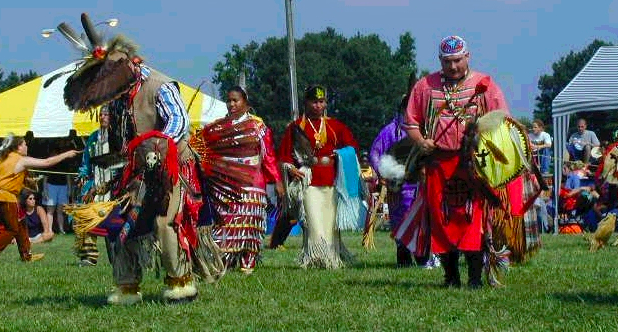Malibu Powwow Celebrates Chumash Heritage, Self-Reliance

Hundreds gathered in Malibu this weekend for American Indian art, performances and culture at the 14th Annual Chumash Day Powwow and to support a population hard-hit by a fragile economy.
The event was billed as a celebration of Chumash culture but dozens of different
tribes were represented at Malibu Bluffs Park. Native dancers, musicians and artists performed for the audience on the seaside cliffs, including actor Gary Busey and his two-year-old son, Luke.
For some, the event was an excuse to eat fry bread, sweet or savory, and to shop and dance.
Bobby WhiteBird emceed the event, which included drum circles and traditional storytelling. The white-haired Paiute/Shoshone performer explained that beyond the festivities, the powwow was an important opportunity to bring attention to crippling unemployment and poverty rates among American Indian populations.
“Unemployment is ravaging our reservations,” WhiteBird said to the crowd. “We’re fighting just to survive.”
American Indians are four times more likely than other ethnic groups to live in poverty, according to the U.S. Department of Labor, and more than 25 percent of American Indians live below the poverty line, census data showed. In California, more than 300,000 individuals classified themselves as solely American Indian. But that number jumps to more than 500,000 if individuals of mixed descent are included.
Many performers and vendors make their living by performing at powwows throughout California every weekend, sometimes traversing huge distances across the state.
Kay Wiltfong is a Cherokee doll and handbag designer with long black hair and striking eyes. She lives in San Diego and drove 150 miles to attend the Malibu event.
“The gas gets really expensive,” Wiltfong said. “And next weekend I’m in Sacramento.”
Some vendors even cross international borders to peddle their wares.
Maylin Marin is an artist and jeweler who returns to her indigenous Kaqchikel community in Guatemala several times a year. Currently staying with friends in the San Fernando Valley, Marin said she spends long hours beading intricate native designs into rings, necklaces and bracelets.
“If I’m not selling them, I’m beading them, one by one,” Marin said of her lace-like jewelry.
Beyond economics, Wiltfong said working the powwow circuit has been an opportunity to stay connected to her roots. Both of her parents have passed away, and she lives far from her Cherokee family in Kansas City, Mo.
“I feel like a refugee,” Wiltfong said. “This gives me a sense of place.”
Though powwows were never historically part of Chumash culture, for the Santa Ynez band-- the only federally-recognized band of Chumash-- the practice has been adopted in order to educate the public and “promote self-reliance and pride in Native Americans,” according to the band’s website.
For some in attendance, like Encino resident Termeh Azimadeh and her year-and-a-half-year-old daughter Bella, the inter-tribal event was a much needed day of fun in the sun.
“I don’t know about the Chumash except for the casino,” Azimadeh said. “So it’s great to come out on a gorgeous day and see people really living it.”
Bella, who had a ladybug painted on her face at one of the booths, vigorously blew into a pan flute purchased from Marin’s booth.
“She loves it,” Azimadeh said. “It’s really great they’re here.”



